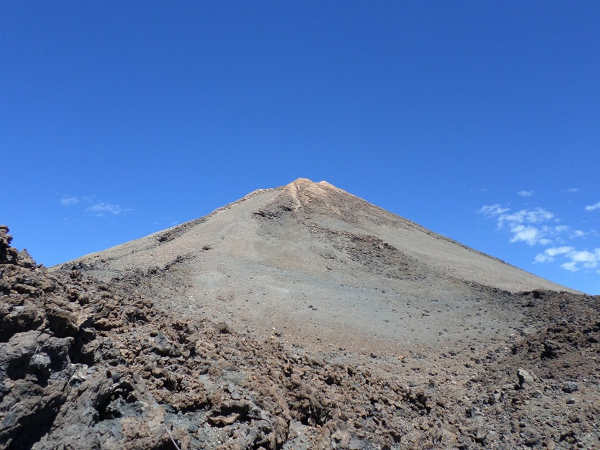
Just 62 miles west of Morocco off the coast of North Africa, lie seven beautiful islands known as Las Islas Canarias in the language spoken there.
The Canary Islands, as we know them, are so close to the African continent that weather on the nearest islands is influenced by the arid winds from the Sahara Desert; even so, it’s Spain that claims the territory, making them the most remote outpost of the European Union.
And what a jewel in Spain’s crown they are!
The world’s third highest volcano (when measured from the ocean floor), El Teide, is located on Tenerife, the largest of the islands in both area and population. Its height makes it the tallest mountain in Spain.
In addition, three of Spain’s four UNESCO World Heritage Sites are in the Canary Islands, an astounding fact if one considers mainland Spain’s rich trove of culture and history.
Each of the Canary Islands is unique, with variances in climate, geology and flora depending on where they’re situated in the archipelago. Some islands have flora found nowhere else in the world.
The Canary Islands chain is part of Macaronesia, a collection of four North Atlantic archipelagos of volcanic origin off the continents of Europe and Africa. Others in the group are the Azores, Madeira and Cape Verde.
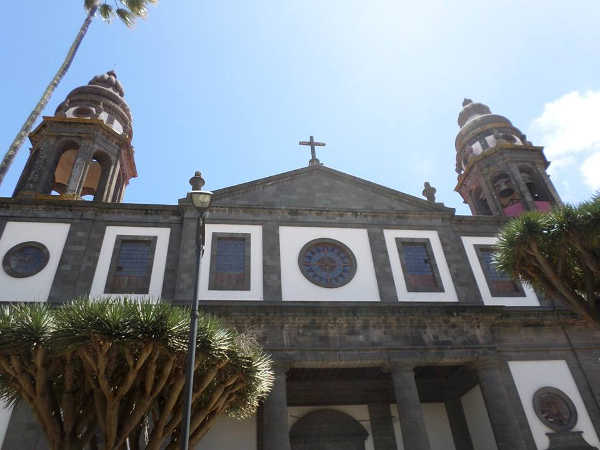
There are still active volcanoes on the Canaries, evidenced by the spewing forth of a full four eruptions since European habitation in the 15th century.
While subtropical in climate, the culture is definitely European. The Canary Islands chain is the only part of Macaronesia that had inhabitants before European conquest, and the aboriginal peoples, the Guanche, are now completely assimilated into the current civilization.
Mystery surrounds the origin of these native people (some legends claim that they’re descendants of the lost city of Atlantis); however, DNA gleaned from mummified remains shows them to be most closely related to the Berbers of North Africa. Some mummies reportedly had blond or red hair.
Historical evidence indicates that they traded with the Romans; in fact, it was Roman author and military officer Pliny the Elder who first reported their existence.
While Guanche culture is considered lost, a legacy remains through the remnants of Guanche food found in Canarian cuisine.
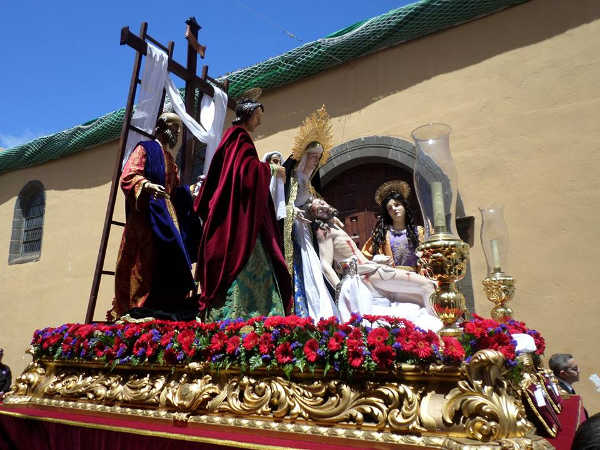
The Canary Islands were once considered a crossroads between Europe, Africa and the Americas, so the cuisine there has hints of Spanish, Latin American and North African fare.
The influence goes both ways, however. Canarian elements can be found in such New World cuisines as the Tex-Mex food found along the southern U.S. border, surprising until I learned that the city of San Antonio, Texas was founded by Canarian settlers, whose descendants fought alongside Davy Crockett at the Alamo.
My son spent a recent year in Tenerife teaching English, and my appreciation for the Canary Islands increased dramatically thanks to his rich experience.
He lived in the largest city on the island, San Cristobal de la Laguna (commonly known as La Laguna), which happens to be one of the UNESCO World Heritage Sites in the island chain.
From the images my son sent while there, the town’s architecture is a beautifully preserved example of 16th century Spain.
La Laguna exudes history, particularly in the historic downtown area where my son taught, yet is very much alive with activity. Festivals and processions take place regularly, both religious and local in nature, and it’s not unusual to see jugglers and other artisans in the many public plazas.
Near his apartment vendors offered their wares in the Mercado de Municipal de la Laguna, a large, open building with a tent-like roof where individual stalls display a seemingly endless array of foods such as cheeses, meats, fish, vegetables, candied fruits, spices and sweets.
At nearby outdoor stalls live chickens, pigeons, ducks and rabbits could be found, as well as clothing, religious items, and even flowers sold by nuns.
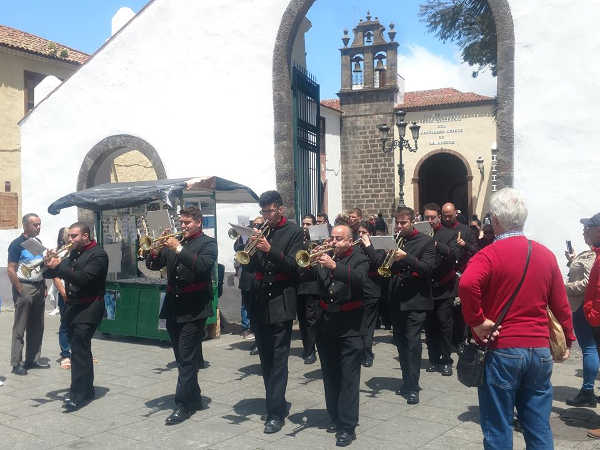
A favorite Mercado find of his was olives in a variety of flavorful local sauces known as mojo.
Perhaps no food is more quintessentially Canarian than mojo sauce. The most popular version is called mojo picon, or red pepper sauce, made from dried red peppers, oil and other ingredients, thickened with stale bread.
Mojo verde, a green version, is made with fresh cilantro or parsley. These sauces are served with potatoes, fish and meats.
One of the teachers at my son’s school gifted him with a bag of gofio, a Canarian flour made with toasted grains (usually wheat or maize).
Gofio goes back to the time of the Guanches, when it was a staple of their diet and made with barley and a rhizome of certain ferns.
Canarians are raised on gofio – it’s rich in vitamins and minerals – and emigrants have spread its use to the Caribbean and the Western Sahara.
Gofio doesn’t spoil easily, so it was a favorite of Canarian mariners.
To accompany the flour, he was given a bottle of homemade palm syrup. As is typical, my son mixed the gofio flour with milk and the palm syrup to make a sweet paste, which he enjoyed.
He says that gofio tastes and looks like the dust in the bottom of a box of Cheerios (a good thing in his opinion).
If any readers are interested in trying gofio, a quick Internet search revealed that it can be purchased online at a surprising variety of vendors common to us.
Typical of the Canary Islands are guachinche restaurants, usually found in the countryside or small towns, though my son frequented one in La Laguna near his home.
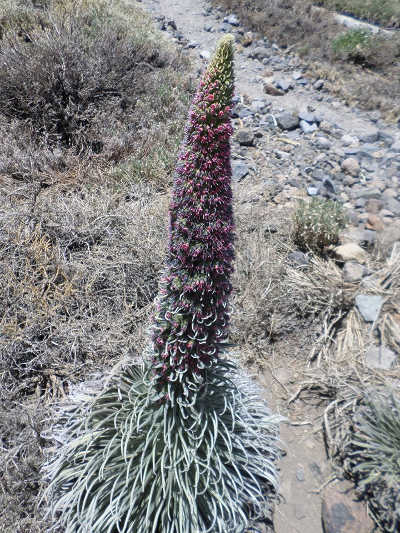
These restaurants are unique in that they’re owned and run by families who prepare large batches of food made exclusively with bounty from a working farm which they also own. Wines made with grapes from the property are often served.
It’s not unusual to see smoked pig legs hanging from the ceilings of coffee shops and bars, with the meat used to make sandwiches. A favorite neighborhood pub of my son’s featured an employee whose job was to carve ham at the end of the bar.
As a vegetarian, my son stuck with almogrote, a thick and delicious Canarian cheese sauce served with toasted bread.
Fried cheeses, queso asado, are served with a variety of sauces in the islands, including in sweet presentations. My son especially enjoyed (and now misses) queso asado con miel de palma, fried cheese with palm syrup.
I’m sure he would enjoy it if I could find the ingredients to make it.
Today’s recipe is for a signature dish in the islands, papas arrugadas, or wrinkled potatoes, which are served as a side dish or in a restaurant as tapas, typically accompanied by red or green mojo sauce. (A recipe for mojo verde is included below.)
What makes them interesting are the wrinkly skin and high level of salt that coats it, which originally came from boiling them in sea water.
The modern version uses heavily salted water, and I found a wide variety in the amount of salt added, from 2 tablespoons to a full quarter cup. I prefer a happy medium of 4 tablespoons, but you can adjust the salt as desired.
And before we go, you might be interested to know that the closest Taco Bell restaurant to La Laguna in Tenerife is 886.6967 miles away in Madrid, something that my son researched. As much as he enjoyed Canarian cuisine and his experience there, it was good to be home to enjoy a nice, American taco.
Please enjoy!
Papas arrugadas con mojo verde
2-1/2 pounds baby potatoes, the smaller the better (I like using a mixture of colors)
4 tablespoons coarse sea salt
Water to just cover potatoes
For the mojo verde:
1 large bunch of cilantro (parsley can also be used; increase the cumin a bit, if so)
2 cloves garlic, peeled
½ teaspoon salt
1/4 teaspoon cumin
1/3 cup olive oil
3 or more tablespoons cold water
2 or more (to taste) tablespoons sherry vinegar
Scrub potatoes and remove eyes, but do not peel. Place in pot with the salt and just enough water to cover them. Bring to a boil and then simmer until potatoes are cooked, about 20 minutes, but this will depend on their size.
In the meantime, make the mojo. Add cilantro, garlic, salt and cumin to a blender and puree to a paste. Add the oil in a steady drizzle while blending, then add the water and blend again. Add the vinegar and blend again. Check for seasoning and add more salt, cumin or vinegar to taste. Thin with more water, if needed.
Once the potatoes are cooked, drain all the water and return pot to the heat. Once all the moisture has evaporated, a thin coating of white salt should start to form on the potatoes. Shake or stir the pot to keep them from sticking. When the potatoes start to brown and wrinkle slightly, they’re done.
Served hot, topped with the mojo verde.
Editor's note: A previous version had inadvertently omitted the cumin in the mojo verde recipe.
Esther Oertel is a writer and passionate home cook from a family of chefs. She grew up in a restaurant, where she began creating recipes from a young age. She’s taught culinary classes in a variety of venues in Lake County and previously wrote “The Veggie Girl” column for Lake County News. Most recently she’s taught culinary classes at Sur La Table in Santa Rosa, Calif. She lives in Middletown, Calif.


 How to resolve AdBlock issue?
How to resolve AdBlock issue? 



